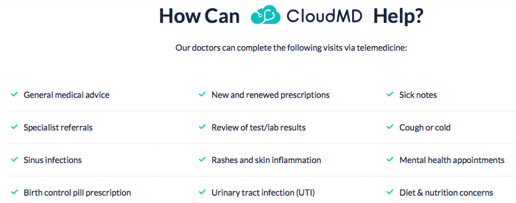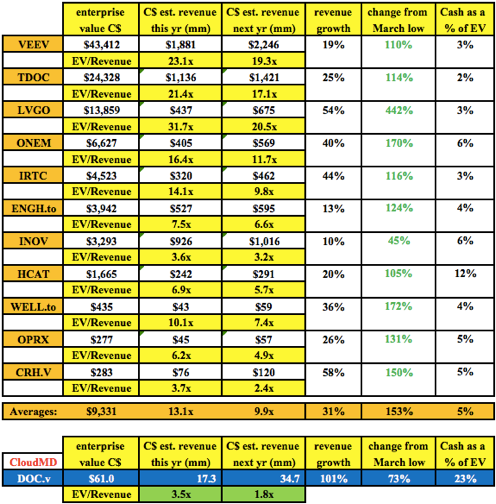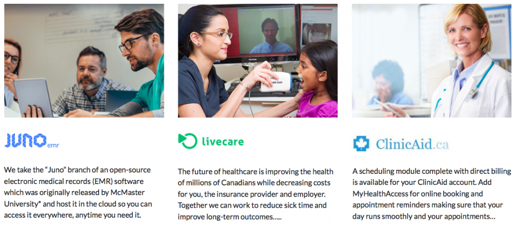This Border Town Was on the Rise. Then the Pandemic Hit. - The New York Times
This Border Town Was on the Rise. Then the Pandemic Hit. - The New York Times |
| This Border Town Was on the Rise. Then the Pandemic Hit. - The New York Times Posted: 18 Jul 2020 06:06 AM PDT  BLAINE, Wash. — Over the past couple of years, Mike Hill poured more than $3.5 million into renovating his Chevron gas station and opening a Starbucks next door. People from British Columbia were crossing the border in droves to buy cheap gas and milk in Blaine, Wash. It seemed like a slam dunk investment. Len Saunders, an American immigration attorney, remembers talking to Mr. Hill about the plan when he was trying to convince Starbucks to open in town. "They said to him, what if the border closes down?" Mr. Saunders recalled. The idea seemed so preposterous to those who lived in Blaine that "everyone laughed." Then the coronavirus arrived. Now almost no one comes to Blaine anymore. When the border between the United States and Canada closed to nonessential travel on March 21, the southbound traffic into Blaine — the busiest crossing between Washington and British Columbia — slowed to a trickle. In June, just 12,600 people entered the United States from British Columbia, down from 479,600 during the same month last year. The economic impact on Blaine, a city of about 5,000, has been crippling. Beaches are now largely empty save for the rocks left by the receding tide. More than a dozen gas stations that once bustled with people heading elsewhere are quiet. The stores that handled mail-order goods for Canadians looking to avoid taxes are piled high with packages that their purchasers cannot pick up. Image  "The longer this goes, the more devastating it gets," Michael Ebert, the president of Blaine's Chamber of Commerce, said as he pointed to the empty storefronts and recently shuttered shops. Updated The loss is particularly painful to Mr. Hill, 59, a lifelong resident who has seen the town go through cycles — he used to help kick the drunks out of his family's bar, back when Canada banned alcohol on Sundays and a rowdier crowd frequented Blaine's night spots. Mr. Hill acknowledges that Blaine was always a way station for people heading to perhaps more interesting locales. And sure, there were some empty storefronts on Main Street before the pandemic closed many of them down. But in the last few years, he saw more businesses coming into town. In large part, the resurgence was fueled by Amazon. Canadians could save money on shipping and taxes by sending their orders to stores in the United States and picking them up later. Today, Blaine has dozens of businesses handling packages from online commerce. Other businesses followed — including the Starbucks next to Mr. Hill's gas station, which opened in 2018, and a hemp clothing store called Rawganique. A grocery store was set to move in soon. "We all felt like Blaine was finally going to hit its time," said Mark Seymour, who works with his father, Steve Seymour, at their oyster farm and restaurant. "And then this happened." "Gas and packages have been the backbone of our economy," Mr. Ebert, the Chamber of Commerce president, said. "You come around the holidays, these package places, by the time they're open, they've got about 20, 25 in line." At Mail Boxes International, employees say that it feels like Christmas — only without the joy. Yet-to-be-claimed boxes are piled waist-high in the lobby. The top shelves of the storeroom, normally bare, are stacked tall enough to reach the rafters. When the border first closed, many Canadians figured it would reopen soon, and they kept ordering online goods, the owner, Brant Baron, said. He put a second storage container in the parking lot to handle the overflow. But then the border reopening got pushed back again, and then again, and Canadians stopped ordering as much. Looking at all the boxes, you would not know that business is down 75 percent. "All this is kind of a war zone," Mr. Baron said, gesturing to piles of "forwards" in the lobby — boxes that his staff needed to measure to calculate what it would cost to ship them to Canada. Most customers, Mr. Baron predicted, would find it prohibitively expensive, and he would have to find a place for them in the storage room. "We've gotten creative with the shelving," he said. Just months ago, cars may have crawled through several lanes of traffic for hours before crossing the border. Now, all of those lanes are empty. On a recent afternoon, a U.S. Customs and Border Protection vehicle sat in the highway leading into Canada, and several officers milled around. "They tell me they're bored," said Mr. Saunders, who recognized a couple of the officers by name. Normally they would be stationed inside the port of entry inspecting applicants for admission, he said. Sometimes they patrolled Peace Arch Park, a strip of land straddling the border where people from both countries can still meet. The park also serves as Mr. Saunders's de facto office since he tries to avoid meeting clients inside his office these days. Early in the pandemic, he worried that his business would dry up. But many people, especially couples separated by the border closure, have been rushing to get their green cards processed. For a while, some even set up tents in the park, Mr. Saunders said, until those got shut down recently, too. "Why do you think they're in tents?" he said. "They haven't seen each other in three months." On Tuesday, officials confirmed that the border would remain closed until at least Aug. 21, extending the reopening for a fifth time. Canada has had about half as many coronavirus deaths per capita as the United States. The number of cases in Canada has been steadily declining since April, while cases in some states are surging. "I'm not very optimistic at all," Steve Seymour said during a recent interview at the family business, Drayton Harbor Oysters. "Why would they let us in?" Drayton is just a couple of minutes down the street from Mr. Hill's Chevron and Starbucks, and business is down, Mr. Seymour said. Still, he considers himself one of the lucky ones. The city gave him permission to use a little more outdoor space for extra tables, he said, and on a recent afternoon, customers were ordering grilled garlic butter oysters and fried shrimp tacos to eat at tables they were asked to bus themselves. Mr. Seymour farms his oysters nearby, and Drayton had been attracting Washingtonians who liked the farm-to-table approach. Mr. Seymour is thinking about what is next. He can still do takeout when the winter comes. And although he just spent money on new tables and chairs, he is considering buying tents and heaters for outdoor dining in the cold. "My whole vision now is just to get through this year without being totally in huge debt," Mr. Seymour said. Blaine had been on an upswing, after all. Business, he was sure, would be back. What were the chances it wouldn't? |
| Cheap Valuation and Fastest Revenue Growth in Telemedicine? Analyst Says Yes. - Streetwise Reports Posted: 17 Jul 2020 04:10 PM PDT
Please note: News came out July 16, the day this article was written, on CloudMD, the subject of this article. The news is not addressed in this article, but is considered to be good news and will be discussed in a future write-up. Gold is at a nine-year high. Dozens of gold juniors have seen their share prices soar this year. Investors see the writing on the wall; gold fundamentals are incredibly strong due to Covid-19-induced government debt issuance, money printing and deficit spending, with no end in sight. Once people realize a paradigm shift is at hand, they're not afraid to buy smaller, riskier companies, seeking large gains. Covid-19 is ushering in a number of paradigm shifts, but few as clear-cut as gold. Readers beware, some trends have already been exploited. Online shopping? Amazon is up 92% since March. Teleconferencing? Zoom up 140%. Online education? K-12 Inc., +175%. Movie streaming? Netflix, +110%. Telemedicine is hot and will remain strong for years, not months or weeks Like gold, I think telemedicine's time has come. Covid-19 has vaulted this niche industry into the big leagues in a matter of months rather than years. Regulators were forced to rapidly understand and get behind tele-sessions. Insurance companies have had to do the same. Truly a win-win-win for patients, doctors/nurses and medical practices. If one agrees that telemedicine is a bona fide paradigm shift in healthcare services, then one should consider investing in smaller companies with potentially more upside (albeit with commensurately more risk) than firms like $50 billion ($50B) Veeva Systems (VEEV:NYSE), which is +104% since March; $24B Teladoc Health Inc. (TDOC:NYSE), +114%, or $14B Livongo Health (LVGO:NASDAQ), +430%! Much of telemedicine is new, everyone is learning as they go. Successes will be handsomely rewarded. Well-funded, small, smart, fast, nimble companies probably have a two- or three-year window to get it right. The top companies will get taken out at attractive valuations. CloudMD well positioned to thrive in telemedicine, then get acquired A company that's ideally positioned to rapidly expand in telemedicine and potentially be acquired is CloudMD Software & Services Inc. (DOC:TSX.V; DOCRF:OTCQB; 6PH:FSE). It has a market cap of $72.7 million ($72.7M) and an Enterprise Value (EV) {market cap + debt – cash} of ~$61M. Revenue is growing very rapidly, potentially increasing by >400% from $6.8M in 2019 to the consensus estimate of $34.7M in 2021. CloudMD is revolutionizing the delivery of healthcare by providing patients easy, fast access to all aspects of their care via phone, tablet, laptop or desktop computer. The company offers SAAS (software as a service) based solutions to medical clinics across Canada. That's on top of owning and operating brick-and-mortar clinics and acquiring new facilities.
Management has developed or acquired proprietary technology that delivers high-quality care through connected primary care clinics, telemedicine and artificial intelligence. CloudMD currently provides service to an ecosystem of 376 clinics in eight provinces, over 3,000 licensed practitioners, with access to nearly 3 million patient charts. Hybrid business model; clinics + telemedicine + SAAS-like margin potential Following the SAAS business model, CloudMD has the potential to be a high-margin, stable (low churn), rapidly growing company, with long-lasting (recurring) revenue. As shown in the chart below, the company has the fastest [expected] revenue growth (2021 over 2020) at 101% versus an average of 31%. Part of the reason is that revenue is launching off of a small base, but the company also compares favorably on its EV/revenue multiple (3.5x/1.8x) versus averages of (13.1x/9.9x). So, fastest-growing, cheapest valuation.
Management is prudently pursing a hybrid approach to healthcare delivery in Canada. In addition to telemedicine the team continues to acquire, own and optimize conventional clinics. I believe this approach captures the most efficient and cost-effective way to gain market share. There's a finite number of doctors, nurses and family offices. Rolling them up into CloudMD, before they join other companies, is a winning strategy. Medium-sized companies can only grow so fast organically. They need to acquire growth in order to make themselves attractive to larger players. There are a lot of small-cap telemedicine ventures, but only a few are high quality, with visionary management teams, strong balance sheets and rapid revenue growth. Fewer still offer compelling valuations. After raising $15M last month, management has amassed a sizable war chest with which to make accretive acquisitions. CloudMD is making acquisitions of businesses at under 1x revenue, integrating and streamlining them, making the revenue worth more. Larger players pay higher revenue multiples, M&A critically important Larger entities can afford to pay well above 1x revenue because they unleash even greater synergies and economies of scale, and gain the opportunity to cross-sell new services. It appears that management has the financial wherewithal to acquire about $30M in annual revenue. That's 86.5% of the consensus estimate for 2021 of $34.7M.
Once companies like CloudMD gain reasonable scale, they become prime takeover targets themselves. To be clear, this chain of events only works while the underlying sector is strong. Telemedicine is strong! The company's shares have languished; some fear an upcoming selloff as two blocks totaling ~6M shares (private placements at $0.48; current share price $0.64) become free-trading on July 20 and 30. Some of the feared selling has probably already taken place. Over the past three months, average daily trading volume was 1.3M shares (per Stockwatch). As the telemedicine sector soared from late March on, CloudMD shares initially participated, rising from $0.37 to $0.95. However, the stock has settled back to $0.64. Early last month, the company issued $15M worth of shares at $0.70, with a half-warrant at $1.00, giving them the largest cash holdings relative to EV (23%) of any peer I could find. CloudMD and its CEO are not new to telemedicine; this is a people business CloudMD has been actively involved in the healthcare space for years. In May 2018, it acquired HealthVue Ventures, a family practice with three clinics performing telemedicine, and other more routine services. It's been over two years that management has seen virtual meetings as the wave of the future. CEO Dr. Hamza has been practicing telemedicine for seven years, making him a leading expert in this nascent field. Patients can avoid missing work or school by using virtual meetings, negating the need for childcare—or worse, having to drag children to the doctor's office. For some, getting to an appointment on time, and also planning the rest of the day's activities, can be difficult and stressful. Evidence from four months of pandemic in North America, as telemedicine has been thrust upon us, suggests most patients find it to be as good, or better, than in-person visits. Going to the doctor takes time and logistical preparation and carries added expenses. By car or public transport, finding/paying for parking, paying and waiting for Uber rides, or getting rides from friends and family. A half-hour appointment can turn into a much longer, unpredictable, stress-provoking ordeal.
In addition to being much more convenient, patients are reporting more time with doctors and feeling that they have a doctor's full attention. Incremental, high-quality time spent with doctors and nurses means more questions asked and answered. In-person visits will still be needed, but the mix is shifting in favor of virtual consultations. Patients like telemedicine; everyone benefits from less exposure to germs As patients get used to the ease of telemedicine, pundits believe they will initiate more sessions with doctors than they otherwise would have. Also, patients who rarely, if ever, seek medical advice or treatment—due to a fear of doctors, hospitals, germs or social anxiety—might find telemedicine appealing. From the doctor's point of view, they can expect to "see" more patients per week, or the same number in fewer days (five days' worth of patients in four days = Fridays off). Patients are less likely to cancel or not show up to appointments. If a doctor is away on business, at a conference, she/he could still meet remotely. Earlier this week, the CDC director predicted that this fall and winter will be "one of the most difficult times we've experienced in American public health." No one wants to hear that—I sincerely hope he's wrong—but it means that investors will be thinking about and experiencing telemedicine for quite some time. Doctors like telemedicine; everyone benefits from less exposure to germs Healthcare is one of the toughest businesses to operate and especially hard to enter. It takes years of experience and, importantly, trusted relationships and teamwork. New companies can't obtain credibility overnight. Yet credibility is critical to attracting new patients, doctors, nurses and family offices to join small companies like CloudMD. Joining a smaller group of highly talented professionals has advantages over being a tiny fish in a giant pond. New executives and business partners can make a meaningful difference in how CloudMD evolves. In the end, telemedicine is only as good as the people/groups behind it. That's where the story gets really exciting and where the company can deliver tremendous shareholder value. Attracting healthcare rock stars, in part by offering sign-on bonuses, equity stakes, autonomy, a chance to help build a fantastic company, flexible hours/places to work (home, travel, holiday or in a medical office)—getting this right will make an investment in CloudMD really pay off! Great people attract great people. Great people have large networks. Give them CA$15M to deploy? Great things should follow. Peter Epstein is the founder of Epstein Research. His background is in company and financial analysis. He holds an MBA degree in financial analysis from New York University's Stern School of Business. [NLINSERT]Peter Epstein's Disclosures: The content of this article is for information only. Readers fully understand and agree that nothing contained herein, written by Peter Epstein of Epstein Research [ER], (together, [ER]) about CloudMD Software and Services, including but not limited to, commentary, opinions, views, assumptions, reported facts, calculations, etc. is not to be considered implicit or explicit investment advice. Nothing contained herein is a recommendation or solicitation to buy or sell any security. [ER] is not responsible under any circumstances for investment actions taken by the reader. [ER] has never been, and is not currently, a registered or licensed financial advisor or broker/dealer, investment advisor, stockbroker, trader, money manager, compliance or legal officer, and does not perform market making activities. [ER] is not directly employed by any company, group, organization, party or person. The shares of CloudMD are highly speculative, not suitable for all investors. Readers understand and agree that investments in small cap stocks can result in a 100% loss of invested funds. It is assumed and agreed upon by readers that they will consult with their own licensed or registered financial advisors before making any investment decisions. At the time this article was posted, CloudMD was an advertiser on [ER]. Peter Epstein owned no shares, options or warrants in the company. Readers understand and agree that they must conduct their own due diligence above and beyond reading this article. While the author believes he's diligent in screening out companies that, for any reasons whatsoever, are unattractive investment opportunities, he cannot guarantee that his efforts will (or have been) successful. [ER] is not responsible for any perceived, or actual, errors including, but not limited to, commentary, opinions, views, assumptions, reported facts and financial calculations, or for the completeness of this article or future content. [ER] is not expected or required to subsequently follow or cover events and news, or write about any particular company or topic. [ER] is not an expert in any company, industry sector or investment topic. Streetwise Reports Disclosure: |
| You are subscribed to email updates from "cheap-winter-holidays-2018" - Google News. To stop receiving these emails, you may unsubscribe now. | Email delivery powered by Google |
| Google, 1600 Amphitheatre Parkway, Mountain View, CA 94043, United States | |








Comments
Post a Comment